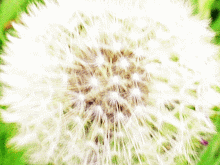 ... //
... //Excerpt #3 /
This exhibition is in part devised to ask pertinent questions about the role of images in the public narratives of the African self and spaces within a changing global image ecology. It is not centered on a specific dispute, nor is its critique simplistic. The exhibition comprises discreet, modest, and forceful propositions on how to look at Africa, how artists work with the tool of photography to trace the arc of a different social reality that is both deliberately pictorial and narrative in approach and at the same time questions the historical dependence on narratives of anomie. African artists and photographers are looking at the unfolding drama of contemporary life and experience in Africa with a fine-tuned alertness. They are examining and analyzing the dizzying processes of spatial transformation, massive transition, and social adaptation that make up the varied realities of diverse groups: urban and rural, formal and informal communities. The artists' penetrating insight provides the remarkable story of this project.
Each of the artists has either taken up a problematic or focused attention on social subjects. For instance, a number of artists explore the interstices of urban communities undergoing transformation, while others use very simple mechanisms of portraiture to spotlight the self-expression of individuals portrayed or deploy the artifice of fashion stylization to draw out values of individual identity. Overall, the works assembled here aid us in examining a different context of image making that is as African in its aesthetic intentions as in its ethical concerns. Given the prevailing, antiphotogenic gaze of these artists, the exhibition most certainly denies the viewer the violent spectacle of deprivation and depravity that has constituted the signature visual image of Africa. In fact, the works evidence a subtle yet substantive critique of such images. Not because there is no deprivation or depravity in contemporary Africa, but because the metaphors of violence and poverty cheapen our understanding of the cultural context. The paradox is that images of suffering — which function as a sort of shorthand for neither looking properly nor seeing Africans in normal human terms — do not ameliorate the disasters which they purportedly engage. On the contrary, they have compounded and skewed the photographic imperatives of a mediatized fascination with the continent's “abnormality” as the primal scene of global media's masochist pleasure, its unrelenting horror vacui. This is why quite often what the viewer encounters in the works produced by artists and photographers in this exhibition is a kind of antiphotogenic and antispectacular approach to making images.
/ By Okwui Enwezor, ICP Adjunct Curator.
// The text belongs to the catalogue for the exhibition Snap Judgments: New Positions in Contemporary African Photography and has been taken from icp.org , the image belongs to the movie johnny mad dog and is taken from the presskit for that movie.


Keine Kommentare:
Kommentar veröffentlichen